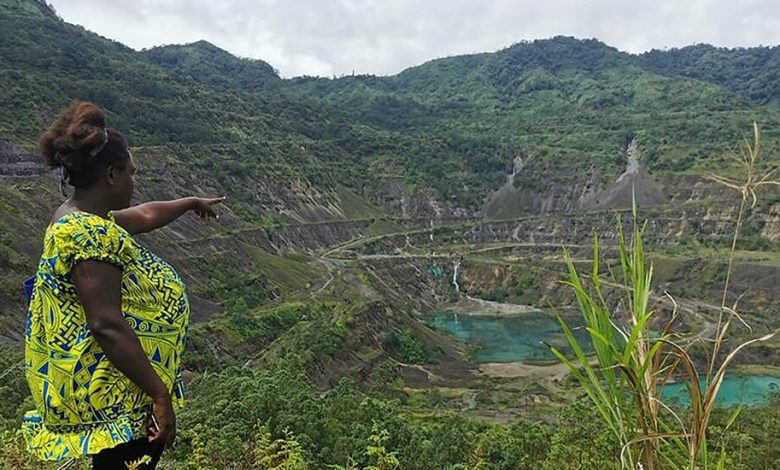‘Important Step’ Toward Addressing Toxic Legacy of Huge Mine

MELBOURNE, Australia — An independent investigation will begin on Tuesday into the environmental and human rights impact of an abandoned gold and copper mine in Papua New Guinea that residents say has been poisoning their water, flooding their lands and putting their livelihoods at risk.
In 2020, 156 residents of Bougainville, an island in an autonomous region of the country, accused the mining giant Rio Tinto of human rights and environmental violations related to what they said was its failure to clean up millions of tons of waste at the mine, Panguna, which closed more than three decades ago.
Working with the Human Rights Law Center in Australia, the residents filed a human rights complaint with a nonjudicial body in Australia that has the power to investigate complaints made against Australian companies operating overseas, and called for an investigation by the Australian government. (The mine was established during a period of Australian colonial administration of Papua New Guinea.)
Last year, Rio Tinto said it would fund an independent impact assessment in response to the complaint. The residents celebrated the launch of the first phase of that assessment, on Tuesday, as a promising start, though it was noted that Rio Tinto has committed to paying for the impact assessment but not remediation.
“This is an important step towards addressing insecurity and pain for the people in the impacted community areas,” Theonila Roka Matbob, a landowner from Makosi Village in Bougainville and a member of Bougainville’s Parliament, said in a statement released by the Human Rights Law Center.
“We are always worrying that the food we eat, the water we drink and the air we breathe is not safe,” said Matbob, who is in an impacted area. “We worry about levees collapsing and mine waste flooding our lands and communities.”
Once one of the biggest and most profitable copper and gold mines in the world and a major economic driver for Papua New Guinea, Panguna was operated by Bougainville Copper Limited, an Australian subsidiary of Rio Tinto, a multinational company.
Locals worried about the mine’s environmental damage and felt that the profits were distributed unequally, with the Papua New Guinea mainland reaping the benefits, while those on the island were left to deal with its impact.
Tensions over the mine were a contributing factor in Bougainville’s independence movement, which continues to this day, and protests by locals led to the closing of the mine in 1989 and a decade-long civil conflict.
During its operation, the mine released over a million tons of waste products into the nearby rivers, said Keren Adams, the legal director of the Human Rights Law Center. Over time, that waste has eroded into nearby rivers that residents depend on for drinking, farming and fishing, she said.
The Human Rights Law Center visited communities where “mine waste has flooded all of the nearby creeks that they use for collecting drinking water, and the groundwater sources,” she said. “As a result, people are having to walk for several hours to fetch water from other, farther away sources.”
The assessment will be conducted by the independent environmental company Tetra Tech Coffey and overseen by a committee consisting of community leaders, landowners, Papua New Guinea government representatives, the Human Rights Law Center and representatives from Rio Tinto.
Its first phase, which is expected to take 18 months, will look at the most acute risks posed by the mine, particularly those that may pose a danger to people’s health and safety, like contamination of water sources and stability of aging mine infrastructure.
It will involve interviews with locals and technical examinations like checking the stability of levies and sampling water sources, said Ms. Adams, and will pave the way for further investigations and discussions about solutions.
“This will help identify the problems, but, ultimately, Rio Tinto needs to commit to funding the solutions so that communities can live on their land in safety,” she said.
